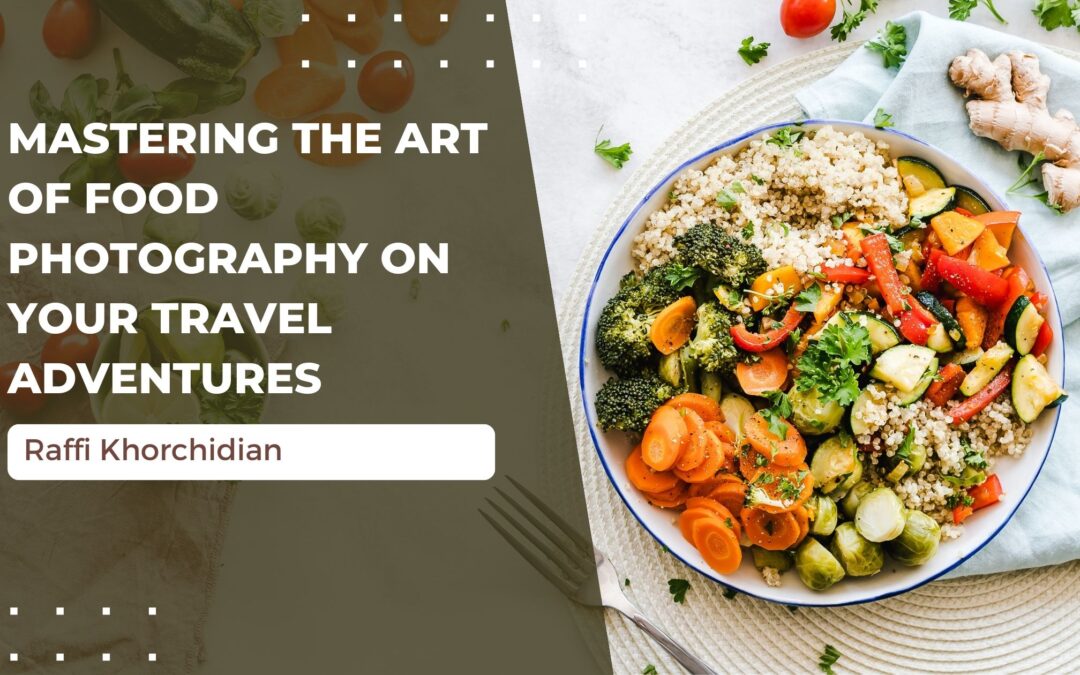Food photography has become a powerful medium for capturing and sharing travel experiences. Combining the beauty of delicious cuisine with the backdrop of a new destination can create visually stunning and emotionally evocative images that tell a story. Whether you’re a professional photographer or an enthusiastic amateur, mastering the art of food photography on your travel adventures can elevate your travel memories and inspire others to embark on their culinary journeys.
Background and Composition:
Choose a background that complements the dish. The textures, colors, and patterns should harmonize with the food. Whether it’s a rustic wooden table in a countryside café or a vibrant market stall, the backdrop can enhance the visual appeal of your photo.
Props and Accessories:
Small props and accessories can add character and depth to your food photos. Consider using utensils, cutlery, napkins, and decorative elements that reflect the local culture or the dish’s origins. Just be mindful not to overwhelm the composition; the food should remain the star.
Showcase the Details:
Close-up shots that highlight the details of the dish, such as the glistening droplets of olive oil on a salad or the steam rising from a bowl of soup, can make your food photography more enticing and immersive.
Capture the Moment:
Sometimes, the most authentic and engaging food photos are candid shots that capture the dining moment. These images can convey the joy and experience of enjoying a meal, whether a local street food vendor or a fine dining restaurant.
Keep It Natural:
Regarding food styling, aim for a natural and delicious look. Avoid excessive retouching and enhancements that make the food appear unrealistic. Authenticity is more appealing to viewers.
Tell a Story:
Use food photography to tell a story about your travel experiences. Show the journey of discovering a particular dish, from its preparation to when it’s served and savored. Include shots of local markets, chefs, and the cultural context of the cuisine.
Experiment with Editing:
Post-processing can enhance your food photos. Adobe Lightroom and Photoshop can help adjust exposure, colors, and sharpness. However, strive to maintain a natural and authentic look while editing.
Share Your Knowledge:
If you’ve learned tips and tricks for food photography, don’t hesitate to share your knowledge with others. Create tutorials or posts about your experiences and techniques, which can inspire and help fellow food photography enthusiasts.
Respect the Culture:
When photographing food in different cultures, be respectful and considerate of local customs and beliefs. In some places, photographing certain dishes or practices may be inappropriate, so always ask for permission or observe local etiquette.
Mastering the art of food photography on your travel adventures allows you to capture and share the essence of a destination through its culinary offerings. It’s a creative and immersive way to document your experiences, tell stories, and inspire others to embark on food and travel adventures.
